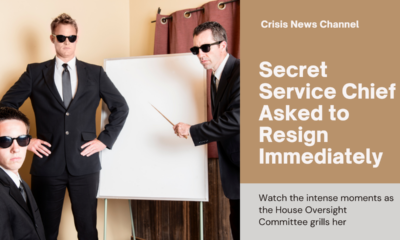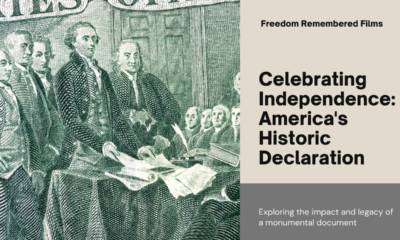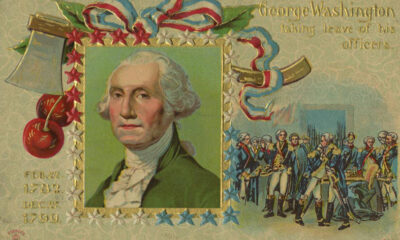Civilization
Spinning Through Time
The Wheel of Time is Amazon Prime’s latest venture into the fantasy genre that avoids the political traps into which The Rings of Power fell.

The following is a condensed version of “Spinning Through Time” by Asheesh Agarwal, published at Law & Liberty.
What would it feel like to live in Middle Earth?
In its adaptation of Robert Jordan’s classic series, Amazon Prime immerses viewers in the world of Wheel of Time (WoT) as well as any production in recent memory. For the uninitiated, WoT could be described as a mix of Lord of the Rings and Game of Thrones, along with a touch of Party of Five. WoT is set in a medieval world filled with a variety of kingdoms, creatures, and conjurers — all of whom are far more attractive than those of us in this reality. The series just wrapped season two and, luckily, more is on the way. (Warning: Spoilers Ahead)
At the highest level, WoT tells the story of a young man, Rand al-Thor (Josha Stradowski), who has been endowed with enormous power to battle the Dark One, who wants to break the world and remake time and humanity in his image. Rand’s personal journey takes place against the backdrop of the larger battle between good and evil, Light and Dark, that repeats itself over thousands of years as the Wheel turns.
Like Game of Thrones, WoT creates entire civilizations and cultures. The majestic Aes Sedai, a sort of omnipresent European Commission filled with rivalrous women who can “channel” the One Power, act and dress very different than the Aeil, a fierce nomadic people akin to Dune’s freman, or the terrifying Seachan, an invading empire that literally leashes and enslaves women. The bad guys, the “Forsaken” and their associated Darkfriends, have their own ambitions and charms. Indeed, one can appreciate Rand’s attraction to the seductive Lanfear (Natasha O’Keeffe) who, despite using the One Power to explode a few heads, seems like a lovely travel companion.
WoT succeeds because it tells an interesting story that stays true to the source material. Any adaptation must make choices—no studio has infinite time or budgets. Jordan’s sprawling narrative presents a particular challenge: fourteen books, 11,898 pages, and 1,800 named characters. How in Light’s name could anyone film this epic while staying true to its major plot points?
WoT pulls it off, often spectacularly. In a crucial choice, the television series centers on Moiraine Damodred (Rosamund Pike), an experienced Aes Sedai who guides Rand and his friends. As a result, the series gives the viewer a broader perspective on WoT’s universe. Amidst many strong performances, Pike’s Moiraine stands out as a strategic thinker, tough as nails, but in season two, also vulnerable (think Jeane Kirkpatrick with the ability to conjure walls of fire). Even as WoT’s look and feel translate perfectly from page to screen, WoT rearranges many events to provide more context and build empathy.
Still, WoT could do more to help viewers follow the story. For someone who read the books years ago, lingering memories provide some context, but for new viewers, some crucial details might seem as mystifying as President Biden’s references to Corn Pop. A little more exposition and repetition could help, along with some onscreen maps.
Despite these quibbles, WoT far surpasses several other recent adaptations both in storytelling and fidelity to the source material. Amazon’s Lord of the Rings prequel, The Rings of Power, failed to retain viewer interest, as only about 37% of viewers who started the series slogged their way through the end. Rings of Power was, well, boring — it spent so much time on worldbuilding that it neglected to move the story along. In a different way, season one of Apple TV’s Foundation series also fell short of its classic source material by rewriting multiple lead characters and changing critical plot points. Fans should have a reasonable tolerance for some adjustments, but seemingly needless changes tend to offend the sensibilities.
Unlike some shows, WoT also manages to avoid political moralizing. The Dark One does not appear to be a contemporary presidential candidate. The Forsaken bear little resemblance to congressional Republicans or Democrats. If anything, both liberals and conservatives should cheer this story, in which the good guys fight an expansionist, authoritarian overseas power that has little respect for women’s rights—or for that matter, border security.
More broadly, the Wheel of Time contains lessons that transcend partisan squabbles. Rand and his friends support each other, risk their lives for one another, and persevere through very difficult times. Other characters allow their ambitions to override their humanity, often with terrible consequences.
Audiences also might appreciate the notion that history repeats itself, for good or ill. Despite the best efforts of the Dark One, the Wheel can’t be broken, humanity can’t be perfected, but each age and generation can improve bit by bit. Today’s partisan hostilities have happened before and probably will happen again, with different players and crises, but at any time in history, and as in The Wheel of Time, loyalty, friendship, wisdom, and perseverance can prevail in the most challenging circumstances. And a little bit of magic can help.
This article was originally published by Law & Liberty Exclusive and made available via RealClearWire.
Asheesh Agarwal is the President of Agarwal Strategies, LLC, and an alumnus of both the U.S. Department of Justice and Federal Trade Commission. Agarwal is affiliated with organizations that promote pro-technology policies.
-

 Executive4 days ago
Executive4 days agoSecret Service chief gets no solace
-

 Executive3 days ago
Executive3 days agoWaste of the Day: Louisville Taxpayers Pay Nearly $600,000 For Empty Building’s Maintenance, Security
-

 Guest Columns4 days ago
Guest Columns4 days agoFear Itself: Democrats’ Favorite Strategy Caused Their Current Chaos
-

 Executive3 days ago
Executive3 days agoWhere is Joe Biden – or Jill?
-

 Executive1 day ago
Executive1 day agoWaste of the Day: Throwback Thursday: Cities Used Crime Prevention Funds on Soccer Games, Paper Shredding
-

 Executive2 days ago
Executive2 days agoFacile and politically motivated suggestions
-

 Civilization4 days ago
Civilization4 days agoBuild Iron Dome in the United States To Prepare for Israel’s Worst Day
-

 Executive4 days ago
Executive4 days agoThe Emerging GOP Plan To Beat Kamala Harris














